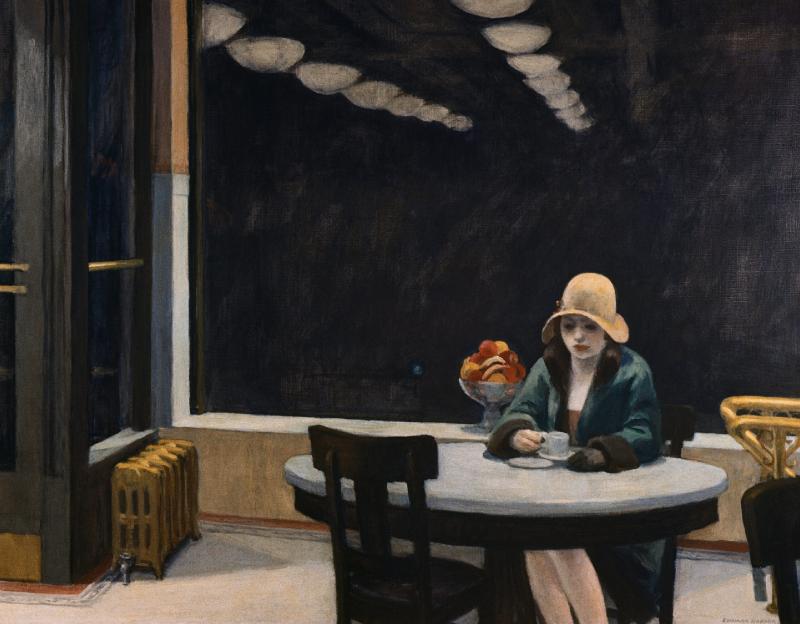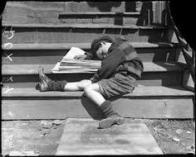The Grim Trends on Loneliness and Mortality
By: Mona Charen (The Bulwark)



You might think that this is an excellent time to be surgeon general of the United States. After all, we've just exited the worst pandemic in 100 years. We're still sniping at one another over what precautions were right and wrong, but today, wherever you go, masks are mostly off, fear has abated, hospitals are resuming normal operation, schools are in session, and theaters, bars, and restaurants are back in business.
I recall imagining, back in 2020, that when COVID-19 was finally in the rearview mirror, we would witness a global party of epic proportions. If the "Roaring Twenties" were partly a reaction to the ebbing of the Spanish flu, perhaps the 2020s would feature a similar eruption of animal spirits and devil-may-care antics (albeit, alas, without the flapper dresses and headbands).
But as Surgeon General Vivek Murthy has observed in a series of interviews, not only are we not kicking up our heels, we are immersed in various forms of psychological misery. Pick a survey. In 2022, Pew Research found that 41 percent of adults had experienced high levels of mental distress since the onset of the pandemic. The New York Timesreports that suicide rates for those aged 10 to 19 increased by 40 percent between 2001 and 2019, and the hospitalization rate for self-harm rose by 88 percent. The Centers for Disease Control and Prevention finds that nearly three in five teenaged girls experienced extreme sadness in 2021, double the rate for boys, and one in three considered suicide.
Some of these findings reflect the added stress of dealing with the pandemic, but longer-term studies have shown similar results. The General Social Survey, for example, a large-scale study that has tracked American attitudes and feelings for 80 years, has noted a decline in well-being among both adults and adolescents starting around 2012. The drop in happiness is particularly marked among teenagers.
And, as Angus Deaton and Anne Case were the first to flag, the rate of deaths of despair (from drug overdoses, suicide, and alcohol-related liver disease) rose so much in the past several decades—before COVID—that overall life expectancy has dropped for the first time since the early twentieth century.
The kids are not all right, and neither are adults. Confronted with data about unhappiness, many are tempted to mount their own hobbyhorses. Some cite political polarization. Others blame Big Pharma and its greedy peddling of opioids. Others cite climate change, or inequality, or racism, or wokeness, or insert-your-grievance-here.
Among those with no obvious ax to grind, like Jonathan Haidt and Greg Lukianoff in their 2018 book The Coddling of the American Mind, other possibilities have been floated. Well-intentioned but misguided parenting practices have created ultra-fragile adolescents, they argue, unable to cope with life's challenges, while the explosion of social media has added an often dangerous dose of bullying and exclusion to the lives of teenagers. Smartphones and the internet have taken their lumps in the popular press, which line of criticism seems plausible if incomplete.
The data show, as Case and Deaton stress, that the population most prone to deaths of despair is non-college-educated whites. They are not the group that springs to mind when cataloging the baleful effects of Instagram, TikTok, or Snapchat. But compared to other population groups, the trend lines for many of their measures of well-being are dramatically worse. Case and Deaton show that rates of mortality from all causes for other groups have declined. For black non-Hispanics, for example, deaths for those aged 50-54 declined steadily from 2000 to 2013 and then leveled off. Deaths among Hispanics of the same cohort also declined, but from a much lower starting point, while deaths of white non-Hispanics were mostly flat. But among the subgroup of white non-Hispanics with only a high school degree or less, the death rate shot up. Prominent among the causes of death were drug overdoses, alcohol poisoning (including cirrhosis of the liver), and suicide.
A new study, "Opiates of the Masses? Deaths of Despair and the Decline of American Religion" published by the National Bureau of Economic Research, adds an additional set of intriguing data. Economists from Wellesley, Ohio State, and Notre Dame examined the effect of religious affiliation on deaths of despair. Using the repeal of blue laws (which prohibited certain activities on Sundays) as the "shock" to measure changes, they found that repeal noticeably reduced attendance at religious services and that declining religious participation tracked closely with increasing rates of deaths of despair. Looking at data from the 1970s to the end of the twentieth century, the economists found that there was a "strong negative relationship across states between religiosity and mortality due to deaths of despair."
We further find that states that experienced larger declines in religious participation in the last 15 years of the century saw larger increases in deaths of despair. Both the decline in religiosity and the rise in deaths of despair were driven by the same group of individuals in the same places. We find the decline in religious adherence is not specifically driven by men or by women, it is similar (perhaps slightly larger) for rural relative to urban residents, and it is not initially observed for non-white Americans.
The researchers found that while religiosity declined across the board for all Americans in the decades they studied, the decline for white, non-college-educated Americans was far steeper. The demise of blue laws might have imposed an opportunity cost on high school graduates—by, for example, obliging them to work on Sundays—that might not have been experienced by the college-educated. And in fact, "the share of middle-aged less-educated white individuals who reported a strong religious affiliation fell by 20 percent, a much larger decline than that for other groups."
The authors note that the decline in religious participation, not belief, appears to be key, since surveys of spirituality, prayer, and belief in God did not change appreciably during this period.
It's unwise to draw large conclusions from just one study, but this data tracks with my own intuition that much of what ails our society arises from our poverty of human connections. It seems likely that the reason people who disaffiliate from churches suffer more mental distress is that religious groups, whatever their flaws, are very good at making people feel a sense of belonging and community. And since young people tend to have larger social circles than older ones, it's not surprising that those most vulnerable to deaths of despair after leaving religious groups are middle-aged.
The origin of all social connections is the family. Single adults are less likely than married ones to belong to all other groups including churches and other civic institutions. This is not to say that all single people are lonely or unfulfilled, but many single people say they'd rather not be. Marriage is the original bond that extends outward, and marriage is weakest among the non-college educated. It is now more common for a woman with only a high school diploma to have a child out of wedlock than as part of a married couple. Cohabiting couples break up far more frequently than married couples (unsurprisingly), and also divorce at much higher rates. Divorced people are three times more likely than married people to die by suicide.
In Genesis 2:18, God says "It is not good for man to be alone." We haven't yet absorbed that lesson sufficiently.

Tags
Who is online
51 visitors


Constant craving has always been.
This is going to keep getting worse, and sadder.
It's really amazing to see how much unhappier Americans are than generations before them. Do whatever you want, when you want, is not a great recipe for long term happiness.
Technology has advanced a lot faster that our ability to comprehend its impact on human attitudes and interactions.
Are you advocating an old fashioned, conservative slow down?
Modern life has driven us further apart both physically and emotionally. My SIL has no shortage of new patients who are sad and depressed. As the family has less value, so does that support system.
I don't think that religion or lack thereof can be the only factor, but I think for some who need it, it was a steadying force.
If one does not have family support, there are many different kinds of communities that can act as such. In fact, even the NT active membership is a community..
Why should whites , college degree or no, be more prone to depression , and drug overdoses and alcohol poisoning , than any other "racial" group?
They have been fed a perception by their politicians that they are being taken advantage of, ignored, and ridiculed.
White people have it no worse than anyone else and in many respects have it better. But conservative politicians have made mid - to lower income whites feel they need to be aggrieved. There is no end in sight either.
If you actually believe that, why in God's name do you advocate doing the same thing to black people? You literally what you want schools to teach black kids that the system takes advantage of them and cheats them, it ignores their problems and our entire society is focused on preventing them from achieving anything .
The history of this country is racism. Did it ever occur to you that racial minorities want more than a so called level playing field?
They want total acceptance. Do you think this country gives racial minorities total acceptance today? You must live a sheltered existence.
And along came QAnon. Liberal thinkers can't understand why.
We are all atheists at birth. Those of us who stay that way can’t lose what they never had. Indoctrination into religious settings gives one something to lose if and when the going gets rough. As I see it this is just more evidence that religion is a crutch. Walk on your own two feet and you won’t be so prone to falling down when life persuades you to abandon the crutch.
The authors note that the decline in religious participation, not belief, appears to be key, since surveys of spirituality, prayer, and belief in God did not change appreciably during this period.
Didn’t Jesus supposedly say to worship in private anyways?
Jesus taught, “When you pray, do not be like the hypocrites, for they love to pray standing in the synagogues and on the street corners to be seen by men … but when you pray, go into your room, close the door and pray to your father who is unseen.” Matthew 6:5-8